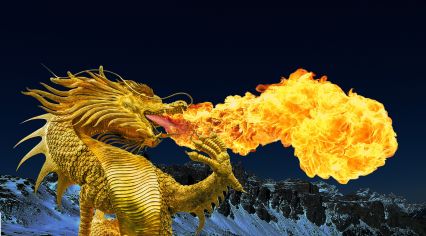This weekend marks the vibrant commencement of Lunar New Year celebrations, heralded by the rhythmic bursts of firecrackers, the graceful movements of red and gold dragons, and the enticing fragrances of steamed and fried delicacies. Embraced by over two billion people, this holiday, also known as Chinese New Year, follows the lunar and solar cycle, hence its fluctuating dates which typically fall between late January and mid-February. Regarded as a fusion of Thanksgiving and Christmas, it holds profound cultural significance across more than ten countries including China, Korea, and Vietnam, serving as a cherished occasion for familial reunions and indulgent feasting.
While the epicenter of festivities sprawls across East and Southeast Asia, immigrant communities in the United States also partake in jubilant celebrations. Xinqian “Allison” Qiu, a doctoral candidate in American studies, has been closely examining Chinese American Lunar New Year observances within the D.C. metropolitan area since 2018. These festivities encompass a diverse array of events ranging from grand performances at esteemed venues like the Smithsonian and Kennedy Center to local parades, talent showcases, and bustling food markets in suburban enclaves with substantial Asian American populations.
Qiu emphasizes the efforts to infuse inclusivity and diversity into these celebrations, enriching them with elements beyond traditional lion and dragon dances. For instance, the D.C. Chinatown Parade has incorporated Brazilian drummers and Pride performers in recent years. Beyond mere revelry, Qiu envisions these events as potent tools for combating anti-Asian sentiments exacerbated by the COVID-19 pandemic and addressing longstanding structural discrimination against Asian Americans, rooted in historical acts such as the Chinese Exclusion Act of 1882.
“These festivals serve as sanctuaries for immigrants and their descendants, preserving their cultural heritage and cherished memories,” Qiu asserts. “Moreover, they provide platforms for advocacy and solidarity.”
As Lunar New Year approaches, Qiu shares insights into ancient customs and their enduring symbolism. Originating from the mythical beast “nian” associated with the term for “year” in Chinese, the practice of burning bamboo to ward off evil has evolved into the tradition of firecrackers. Red, symbolizing auspiciousness and vitality, pervades Lunar New Year decorations and attire, while red envelopes filled with crisp bills signify fresh prosperity. The dragon, revered as a noble and powerful creature, features prominently in festivities, believed to usher in blessings and ward off malevolent spirits. This year, being the Year of the Dragon, holds special significance, potentially heralding a surge in births as dragons are considered the most desirable zodiac sign.
Central to Lunar New Year celebrations is the culinary symbolism embedded within traditional dishes. From chicken symbolizing luck to fish representing abundance, and dumplings signifying wealth, each culinary offering carries profound meaning, reflecting aspirations for prosperity, knowledge, and good fortune in the coming year.
Read more on Be Updated!



Pingback: Mutant Wolves In Chernobyl: Groundbreaking Study
Pingback: Ranveer Singh & Johnny Sins Join Forces In Bold Ad: Tackling Taboos With Humor - BE UPDATED